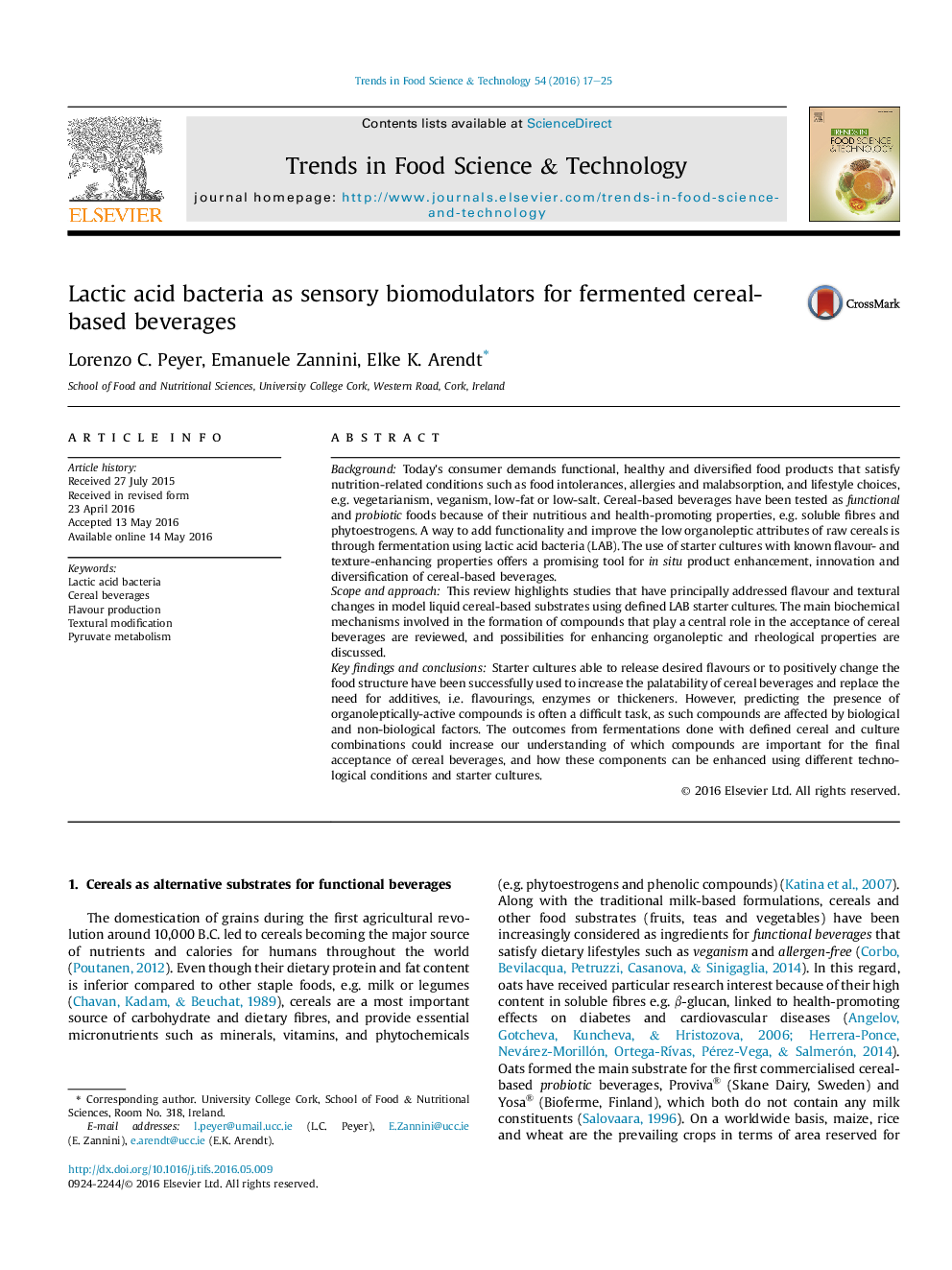| Article ID | Journal | Published Year | Pages | File Type |
|---|---|---|---|---|
| 2098492 | Trends in Food Science & Technology | 2016 | 9 Pages |
•LAB fermentation as suitable tool to improve poor flavours of raw cereals.•Carboxylic acids and aldehydes as the most prominent taste and flavour compounds.•In situ released amylases and exopolysaccharides modulate beverages' mouthfeel.
BackgroundToday's consumer demands functional, healthy and diversified food products that satisfy nutrition-related conditions such as food intolerances, allergies and malabsorption, and lifestyle choices, e.g. vegetarianism, veganism, low-fat or low-salt. Cereal-based beverages have been tested as functional and probiotic foods because of their nutritious and health-promoting properties, e.g. soluble fibres and phytoestrogens. A way to add functionality and improve the low organoleptic attributes of raw cereals is through fermentation using lactic acid bacteria (LAB). The use of starter cultures with known flavour- and texture-enhancing properties offers a promising tool for in situ product enhancement, innovation and diversification of cereal-based beverages.Scope and approachThis review highlights studies that have principally addressed flavour and textural changes in model liquid cereal-based substrates using defined LAB starter cultures. The main biochemical mechanisms involved in the formation of compounds that play a central role in the acceptance of cereal beverages are reviewed, and possibilities for enhancing organoleptic and rheological properties are discussed.Key findings and conclusionsStarter cultures able to release desired flavours or to positively change the food structure have been successfully used to increase the palatability of cereal beverages and replace the need for additives, i.e. flavourings, enzymes or thickeners. However, predicting the presence of organoleptically-active compounds is often a difficult task, as such compounds are affected by biological and non-biological factors. The outcomes from fermentations done with defined cereal and culture combinations could increase our understanding of which compounds are important for the final acceptance of cereal beverages, and how these components can be enhanced using different technological conditions and starter cultures.
